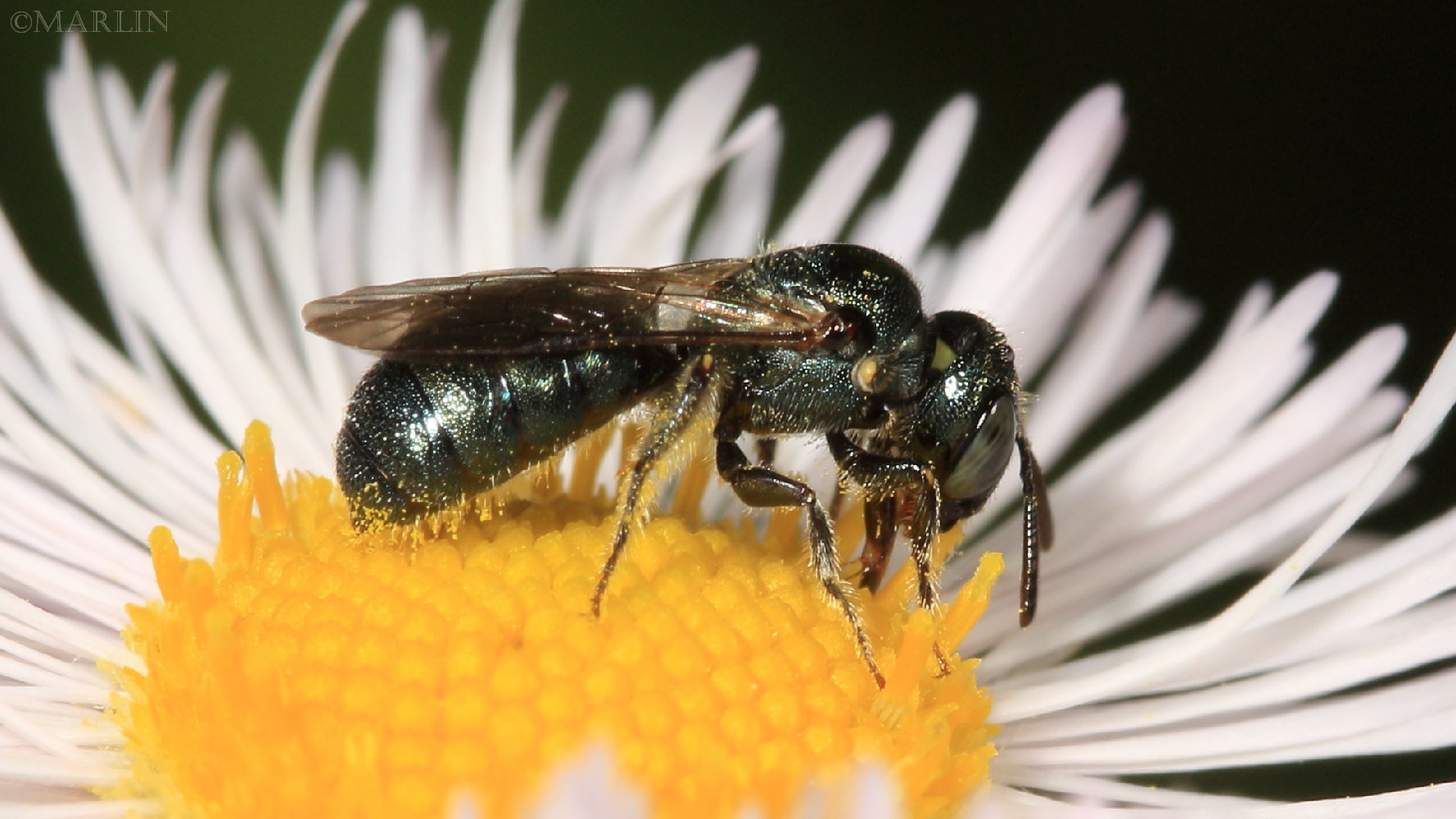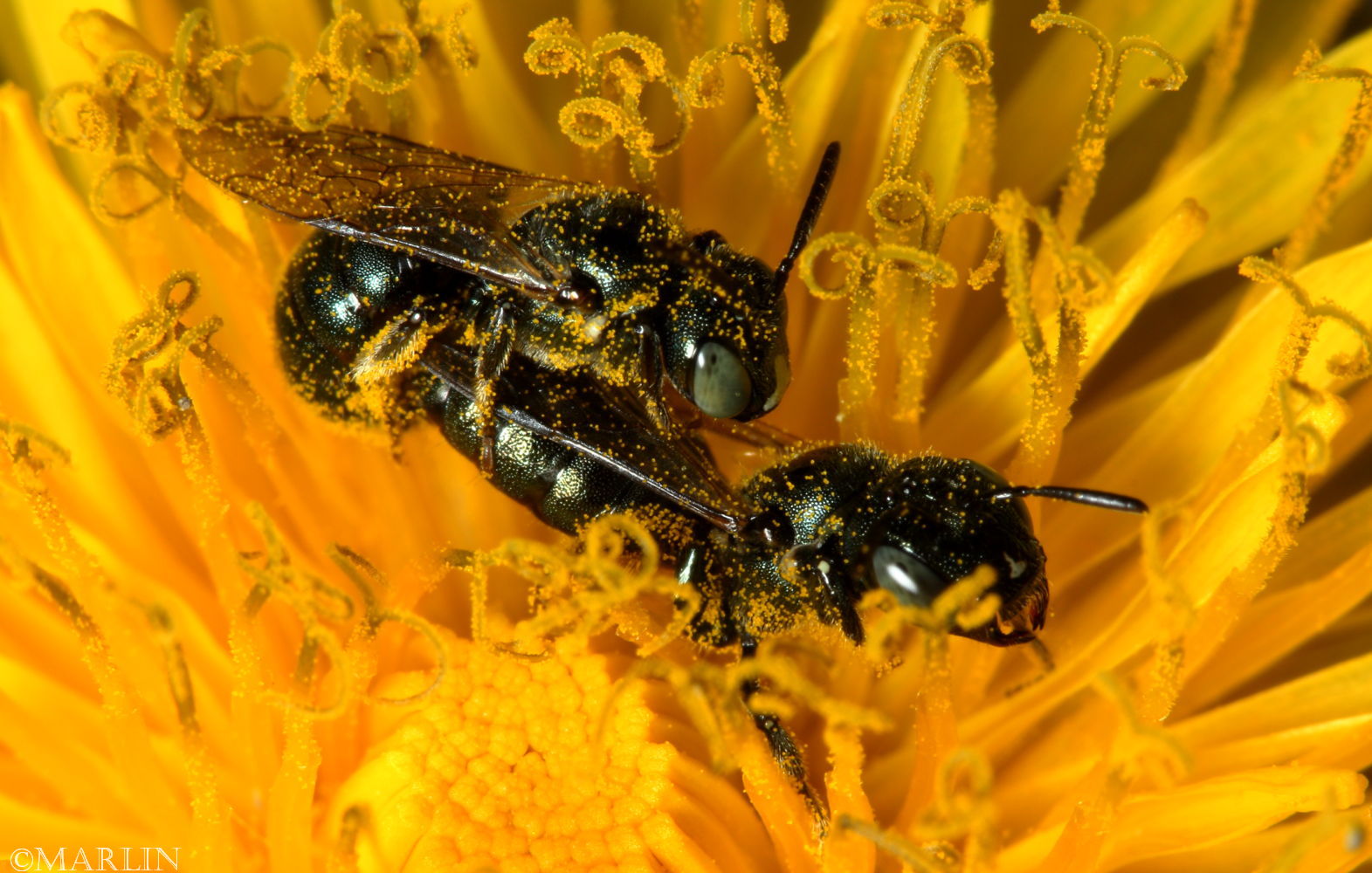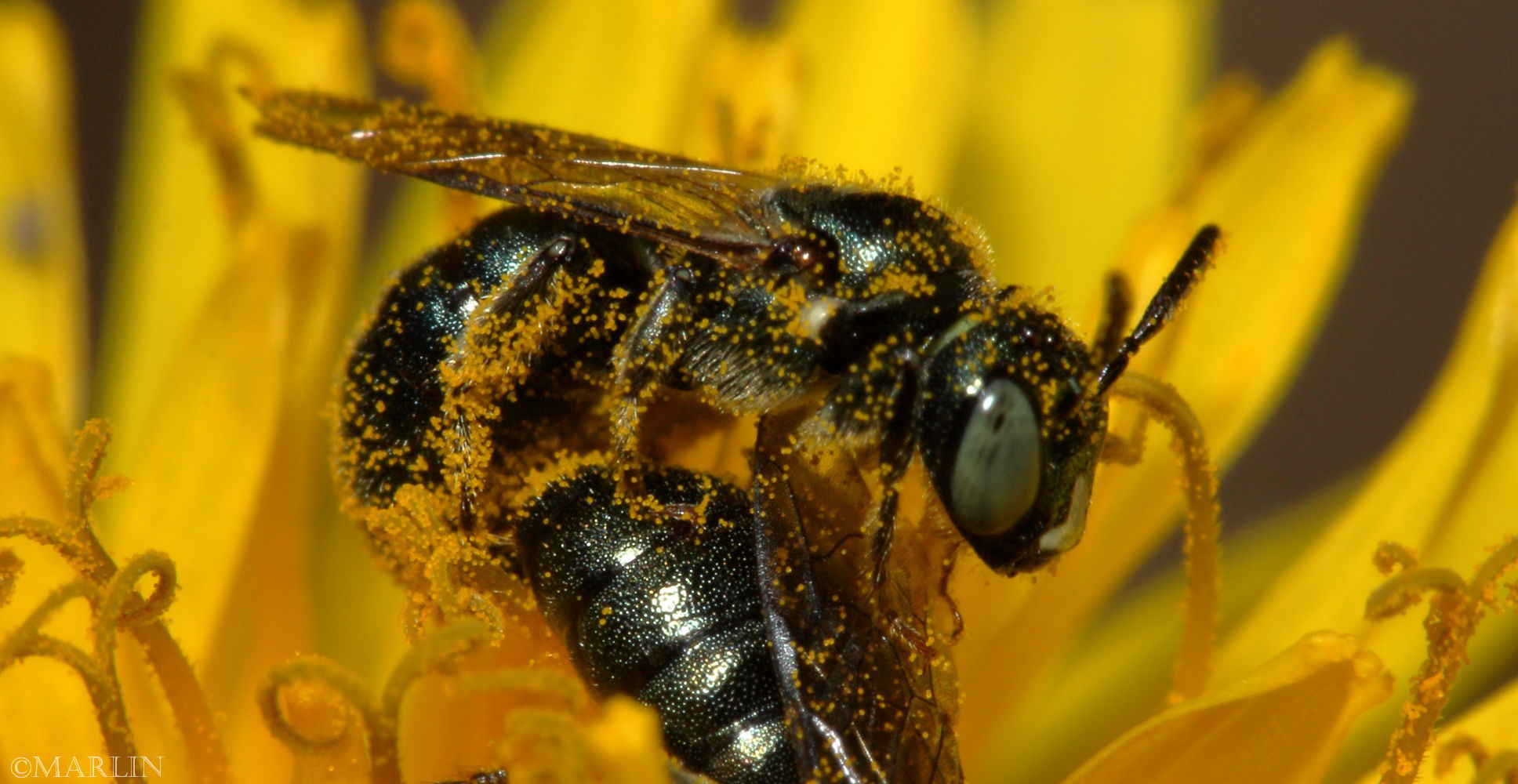Small Carpenter Bee – Ceratina species
Carpenter bees are black, bluish green, or blue, and often have yellow or white markings on the clypeus, pronotal lobes, and legs. There are two genera within the family, Ceratina (small carpenter bees), and Xylocopa, large carpenter bees.
Bees in Ceratina excavate nests with their mandibles in the pith of broken or burned plant twigs and stems, but large carpenters can damage wooden human structures. Both male and female carpenter bees overwinter as adults within their old nest tunnels. Adults emerge in the spring and mate.
In the spring, this overwintering place (hibernaculum) is modified into a brood nest by further excavation.
The female collects pollen and nectar, places this mixture (called beebread) inside the excavation within the plant stem, lays an egg on the provision, and then caps off the cell with chewed plant material.
Several cells are constructed end to end in each plant stem, the number depending upon the depth to which the nest was excavated. It is thought the female bee remains with the nest, guarding it until all her progeny have emerged.
Ceratina bees are important pollinators of a wide range of plants, including crops and wildflowers. They are known to be effective pollinators of plants with specialized floral structures, such as those with long, narrow corollas or clustered flowers.
Despite their ecological importance, some Ceratina species are threatened by habitat loss and degradation, as well as the use of pesticides in agriculture.
Large carpenter bees can become pests when they bore their brood tunnels into woodwork, into wood trim near eaves and gables of homes, fascia boards, porch ceilings, outdoor wooden furniture, decks, railings, fence posts, and shingles; small carpenter bees generally eschew human habitation for plant material. –USDA Carpenter Bees




